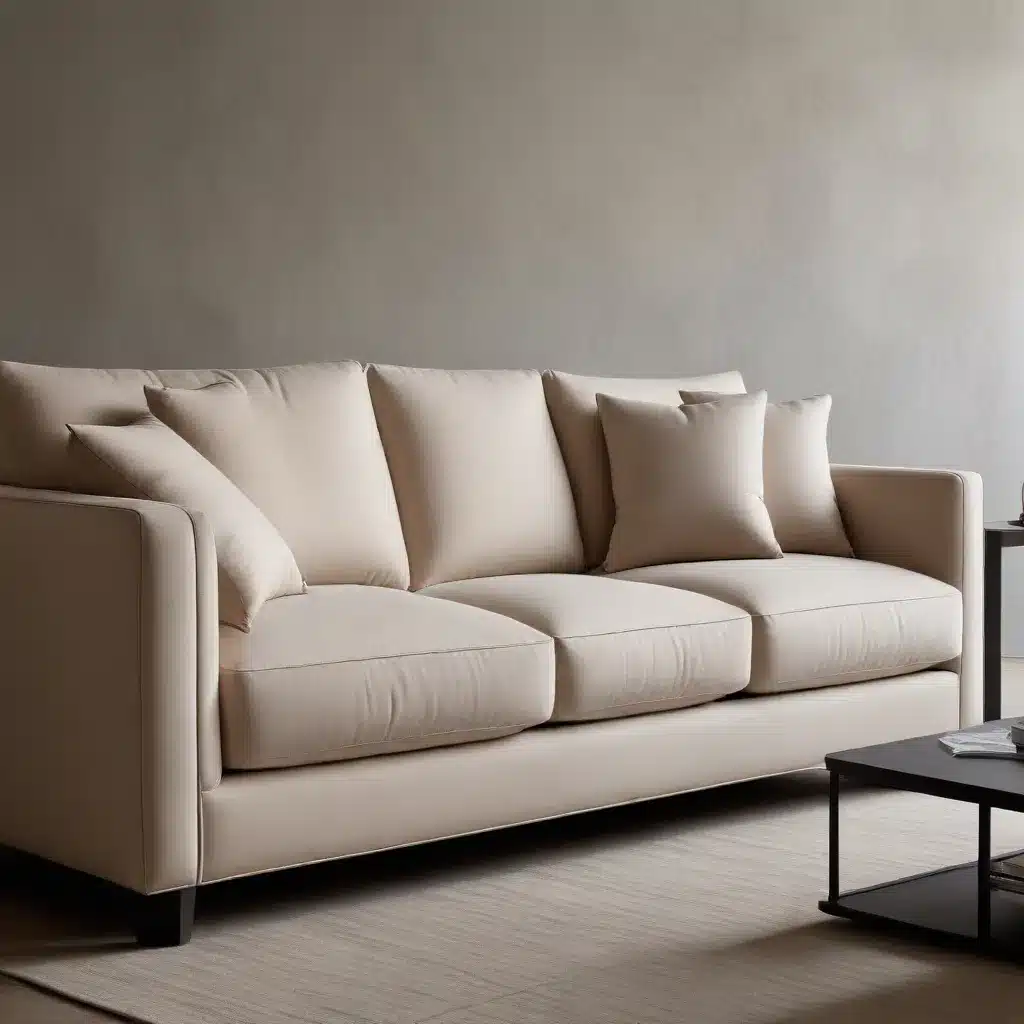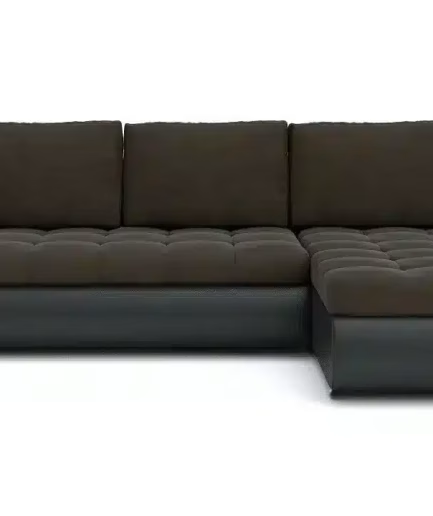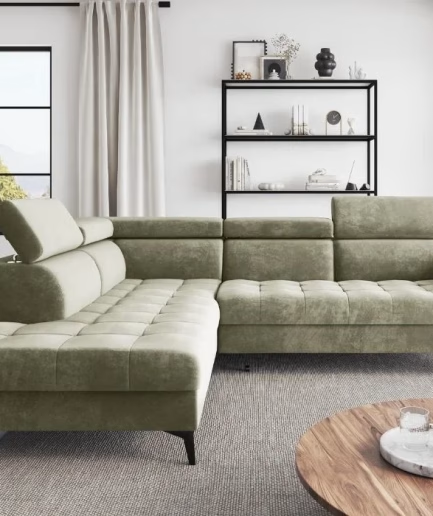
The Evolution of Sofa Design: From Functional to Sculptural
As a furniture specialist with years of experience in the industry, I’ve witnessed firsthand the remarkable transformation of sofa design over the decades. The humble sofa, once a purely functional piece, has evolved into a statement of artistic expression and architectural prowess. This shift represents more than just a change in aesthetics; it’s a reflection of our changing lifestyles and the growing appreciation for design in our living spaces.
In the early days of my career, sofas were primarily about comfort and practicality. The focus was on sturdy construction, durable fabrics, and designs that could withstand the test of time. While these aspects remain important, today’s sofas have taken on a new dimension. They’ve become sculptural pieces that can define a room’s character and serve as conversation starters.
The transition from functional to sculptural didn’t happen overnight. It was a gradual process, influenced by various design movements and technological advancements. The mid-century modern era, for instance, introduced clean lines and organic shapes that paved the way for more daring designs. As materials and manufacturing techniques improved, designers found new ways to push the boundaries of what a sofa could be.
The Rise of Architectural Details in Sofa Design
One of the most striking trends I’ve observed in recent years is the incorporation of architectural details into sofa design. This approach has completely redefined the classic sofa silhouette, turning what was once a simple seating arrangement into a work of art.
Architectural details in sofas can take many forms. Some designers draw inspiration from famous buildings, translating their structural elements into sofa forms. Others look to nature, mimicking the curves and angles found in landscapes or organic structures. The result is a range of sofas that look as if they’ve been sculpted rather than simply constructed.
What’s particularly fascinating about this trend is how it blurs the line between furniture and architecture. A sofa with sculptural arms, for example, can become a focal point in a room, much like a piece of sculpture or an architectural feature. This dual functionality – as both seating and art – adds a new layer of value to the piece.
The Impact of Sculptural Arms on Sofa Aesthetics
Among the various architectural details being incorporated into sofa design, sculptural arms stand out as a particularly impactful element. They have the power to transform the entire look and feel of a sofa, and by extension, the room it occupies.
Sculptural arms can take many forms. Some designs feature sweeping curves that seem to defy gravity, while others incorporate angular shapes that create a sense of dynamism. There are designs inspired by organic forms, like waves or leaves, and others that draw from geometric patterns or architectural motifs.
The effect of these sculptural arms on a sofa’s aesthetics cannot be overstated. They add visual interest, create a sense of movement, and can even influence how light and shadow play in a room. A sofa with sculptural arms becomes more than just a place to sit; it becomes a piece of functional art that contributes to the overall design narrative of a space.
How Sculptural Arms Redefine Comfort
While the visual impact of sculptural arms is undeniable, it’s important to note that they’re not just about looks. As someone who’s spent countless hours testing and evaluating sofas, I can attest that well-designed sculptural arms can actually enhance comfort.
Traditional sofa arms often serve as makeshift headrests or support for lounging. Sculptural arms take this function to the next level. Their unique shapes can cradle the body in new ways, providing support where it’s needed most. Some designs incorporate ergonomic principles, aligning with the natural curves of the human body.
Moreover, the varied shapes of sculptural arms offer more options for seating positions. A person might choose to sit sideways, leaning against a curved arm, or find a cozy nook in an angular design. This versatility in seating options can make a sofa more adaptable to different uses throughout the day.
The Technical Challenges of Sculptural Arm Design
Creating sofas with sculptural arms presents a unique set of challenges for designers and manufacturers. As someone who’s worked closely with both, I’ve gained insight into the complexities involved in bringing these innovative designs to life.
One of the primary challenges is maintaining structural integrity while achieving the desired aesthetic. Sculptural arms often involve complex shapes that can be difficult to construct without compromising strength. Designers must work closely with engineers to ensure that the arms can withstand regular use while maintaining their sculptural form.
Another challenge lies in the choice of materials. Traditional upholstery techniques may not be suitable for certain sculptural designs. This has led to experimentation with new materials and manufacturing processes. I’ve seen everything from molded foam to 3D-printed components used in the creation of sculptural arms.
The upholstery process itself can also be more complex with sculptural arms. Covering irregular shapes with fabric or leather requires a high level of skill and often involves custom techniques. This can add to the production time and cost of the sofa, but the results are often worth it.
Balancing Form and Function in Sculptural Sofa Design
One of the most critical aspects of incorporating sculptural arms into sofa design is striking the right balance between form and function. While the artistic and architectural elements are important, a sofa must still fulfill its primary purpose as a comfortable seating option.
In my experience, the most successful sculptural sofa designs are those that manage to harmonize aesthetics with practicality. This often involves a process of refinement and testing. Designers might start with a bold concept, then gradually adjust it based on ergonomic principles and user feedback.
I’ve seen instances where initially striking designs had to be modified because they proved uncomfortable or impractical in real-world use. On the flip side, I’ve also witnessed designs that seemed unusual at first glance but turned out to be surprisingly comfortable and functional.
The key is to approach the design process holistically, considering not just how the sofa will look, but how it will be used in everyday life. This might mean incorporating subtle ergonomic features into the sculptural elements or ensuring that the arms don’t impede common activities like reading or using a laptop.
The Role of Technology in Sculptural Sofa Design
The advent of new technologies has played a crucial role in the development of sculptural sofa designs. Computer-aided design (CAD) software, for instance, has allowed designers to create and visualize complex shapes that would have been difficult to conceptualize using traditional methods.
3D modeling has become an invaluable tool in this process. It allows designers to experiment with different forms and see how they interact with light and space before any physical prototyping begins. This not only speeds up the design process but also enables more daring and innovative concepts.
Advanced manufacturing technologies have also opened up new possibilities. CNC (Computer Numerical Control) machines can create precise molds for complex shapes, while 3D printing allows for the production of intricate components that would be difficult or impossible to make using traditional methods.
These technological advancements have not only expanded the range of what’s possible in sofa design but have also made the production of sculptural elements more efficient and cost-effective. This has helped to make these innovative designs more accessible to a wider market.
The Influence of Art and Architecture on Sofa Design
The trend towards sculptural arms in sofa design doesn’t exist in a vacuum. It’s part of a broader movement in furniture design that draws inspiration from art and architecture. This cross-pollination of ideas has led to some truly innovative and striking designs.
Many designers I’ve worked with cite specific architectural styles or buildings as inspiration for their sofa designs. The sweeping curves of a Zaha Hadid building might inform the shape of a sofa arm, or the clean lines of modernist architecture might be reflected in a more angular design.
Similarly, the influence of art movements can be seen in many sculptural sofa designs. The organic shapes of Art Nouveau, the bold geometry of Cubism, or the fluidity of Abstract Expressionism might all find expression in the form of a sofa arm.
This intersection of furniture design with art and architecture has elevated the sofa from a purely functional object to a piece that can make a strong design statement. It’s not uncommon now to see sofas that could easily be mistaken for sculptures if placed in a gallery setting.
The Impact of Sculptural Sofas on Interior Design
The rise of sculptural sofas with architectural details has had a significant impact on interior design practices. These bold pieces often become the centerpiece of a room, influencing how the rest of the space is designed and decorated.
In my consultations with interior designers, I’ve noticed a shift in how they approach room layouts when working with sculptural sofas. Rather than treating the sofa as just another piece of furniture to be arranged, they often design the entire room around it, using its unique form to inform the placement of other elements.
This can lead to some interesting design challenges. For instance, how do you balance a room when one piece is so visually dominant? How do you choose complementary pieces that won’t compete with the sofa but will still hold their own?
I’ve seen designers use various strategies to address these challenges. Some opt for minimalist surroundings that allow the sofa to truly shine. Others choose complementary pieces with their own sculptural elements, creating a cohesive look throughout the space.
The Future of Sculptural Sofa Design
As we look to the future, I believe the trend towards sculptural sofas with architectural details will continue to evolve. We’re likely to see even more daring designs as technology advances and designers push the boundaries of what’s possible.
One area I’m particularly excited about is the potential for customization. With advancements in manufacturing techniques, it’s becoming more feasible to offer customized sculptural elements. This could lead to sofas that are truly unique, tailored not just in fabric choice but in their very form to suit individual tastes and spaces.
We’re also likely to see a greater emphasis on sustainability in sculptural sofa design. This could manifest in the use of eco-friendly materials, designs that facilitate easy repair and replacement of parts, or even modular sculptural elements that can be rearranged or updated over time.
As our homes continue to serve multiple functions – as living spaces, workplaces, and retreats – I anticipate that sofa designs will adapt to these changing needs. We might see sculptural elements that incorporate technology, or designs that can be easily reconfigured to suit different uses throughout the day.
Choosing and Caring for a Sculptural Sofa
If you’re considering adding a sculptural sofa to your home, there are several factors to keep in mind. First and foremost, consider the scale of the piece in relation to your space. A sofa with dramatic sculptural arms might overwhelm a small room, while it could serve as a stunning focal point in a larger area.
Think about how the sofa will be used in your daily life. While the sculptural elements are important, comfort should still be a priority. I always recommend sitting on a sofa and trying out different positions before making a purchase.
When it comes to care and maintenance, sculptural sofas may require some special attention. The unique shapes can sometimes make cleaning more challenging, so consider the practicality of the design in relation to your lifestyle.
Upholstery choice is also crucial. The fabric or leather you choose can enhance or detract from the sculptural elements. I often recommend solid colors or subtle textures that allow the form of the sofa to take center stage.
Lastly, remember that a sculptural sofa is an investment piece. It’s worth taking the time to find a design that truly speaks to you and that you’ll be happy to live with for years to come.
Conclusion: The Artistry of Modern Sofa Design
The evolution of sofa design from purely functional to sculptural and architectural represents a fascinating chapter in the history of furniture design. It reflects our changing relationship with our living spaces and our growing appreciation for the artistry of everyday objects.
Sculptural arms and other architectural details have transformed the humble sofa into a statement piece, capable of defining a room’s character and sparking conversation. They challenge our preconceptions about what a sofa should look like and how it should function.
As we continue to blur the lines between art, architecture, and furniture design, I’m excited to see what new innovations will emerge. The sofa of the future may be a piece we haven’t even imagined yet – a true reflection of our changing lifestyles and our enduring appreciation for beauty and comfort in our homes.
For those interested in exploring the world of sculptural sofas further, I recommend visiting showrooms and design exhibitions to experience these pieces firsthand. And for a wide range of sofa options, including some with sculptural elements, you might want to check out Sofa Spectacular. Their collection showcases some of the latest trends in sofa design, including pieces that incorporate architectural details.
The world of sofa design is more exciting and diverse than ever before. Whether you prefer classic styles or cutting-edge designs, there’s never been a better time to find a sofa that’s not just comfortable, but also a true expression of your personal style.





